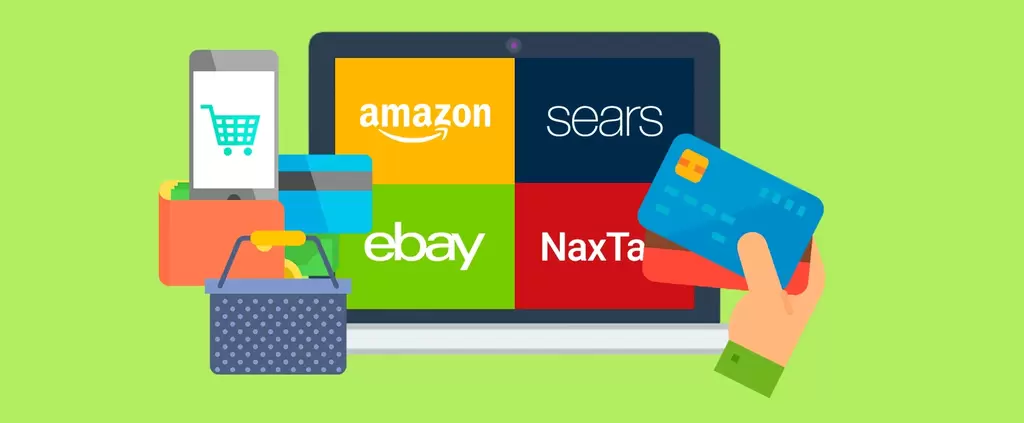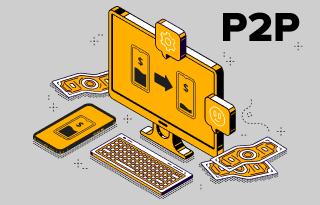Subscribe and you will promptly receive new published articles from the blog by mail
Why everyone wants a marketplace
“Uber, the world’s largest taxi company, owns no vehicles. Facebook, the world’s most popular media owner, creates no content. Alibaba, the most valuable retailer, has no inventory. And Airbnb, the world’s largest accommodation provider, owns no real estate.” – Tom Goodwin
There are more than 40 marketplaces in the world with over $1 billion market capitalization.
Each one started as a small business: Amazon sold books online, while Airbnb rented out an attic in San Francisco, with three mattresses and breakfast on offer.
Uber has become a globally famous taxi service, now valued at $156.58 billion. Global house rental service Airbnb had revenues exceeding $1 billion in the second quarter of 2024 alone, and by the time of writing its market value was $89.11 billion (for comparison, the Hilton hotel chain weighs in at $60.07 billion). Chinese marketplace behemoth Alibaba Group has among the largest retail turnovers globally, with a capitalization of $220.31 billion – and yet holds not a single item of stock.
Success stories like these are inspiring for both novices and seasoned marketplace entrepreneurs alike, and that’s one reason why we see new marketplaces launched every year – bringing with them fresh ideas and ambitions of conquering the e-commerce universe.
This is the opening article in our new series, What to Know Before Launching a Marketplace. Here we’ll cover all the basic issues you’ll encounter from idea inception to development start. Along the way, we’ll also take in some interesting facts, as well as some stories and examples that we hope will provide insight into how you can build a solid foundation for your online marketplace business.
What is a marketplace? What are its hallmarks?

The first company to employ an online marketplace concept was eBay – this industry pioneer has already been trading for two decades, showing other companies worldwide how appealing the model can be to customers. Since then, the number of e-commerce platforms has ballooned.
The best thing about a marketplace business is the competition it creates between multiple vendors – ensuring a great deal for customers. But by also bringing a huge amount of footfall to one digital space, it creates a great environment for sellers, too – with bigger volumes outweighing tighter margins.
In years gone by, the number of different online stores had grown to the point of becoming a bit of a nightmare for customers, who had to navigate a myriad of different interfaces and systems to find what they were looking for – not to mention that within this landscape, stores often went bust, leaving customers in the lurch.
But marketplaces gather sellers in one place, letting them compete on a level playing field with fewer technical and administrative burdens. Meanwhile, buyers can compare products and find what they’re looking for within a familiar and easy-to-navigate environment – with access to a range no offline competitor could match.
Unlike online store owners, marketplace owners don’t sell anything themselves. Instead, they offer a space for third-party businesses, while providing traffic and marketing support. Their revenues can come from a variety of monetization options – making this an attractive business model. (More on this later, of course!)
Hosting multiple vendors does make running a marketplace platform a bit more complicated than a traditional e-commerce model. But this is more than compensated for by the unrestricted geographic scope you’ll be opening up – which, along with the ability to easily add new merchants, offers the potential for rapid growth and limitless scalability.
Types of marketplaces

By client and vendor role
There are three basic models for any marketplace:
- C2C (customer-to-customer);
- B2C (business-to-customer);
- B2B (business-to-business).
In the C2C model, both parties are private individuals. The two interact on equal terms, have common interests, and can easily switch roles: from customer to vendor, and vice versa. Airbnb is a good example of this model.
In the case of B2C marketplaces, customers are still individuals, but vendors are businesses. Amazon’s marketplace is a good example, offering products from large and small enterprises to customers via its website.
Sometimes, C2C and B2C models coexist in a single marketplace – such as, again, on Airbnb, whose listings are placed by both individuals and entrepreneurs.
Meanwhile, the B2B model offers entrepreneurs great solutions for their businesses via collaboration with other companies. On B2B platforms you’ll find wholesale suppliers and new marketplaces for your products – just take a look at Alibaba.
By market type
As you hone in on your own niche, you’ll have two broad marketplace orientations to choose from: vertical, and horizontal.
Vertical marketplaces provide similar products and services from multiple vendors. For example, Couchsurfing is a platform that lets travelers find a free bed for the night anywhere in the world – usually courtesy of another traveler. The vertical marketplace model is also that of Uber, Airbnb, Etsy, and others.
On the other hand, marketplaces operating on a horizontal model seek popularity by offering as wide a variety of product categories as possible on a single platform. This is the model adopted by, among others, Amazon and eBay.
By product type
Marketplaces can be roughly divided into…
- Those focused on selling physical products that are shipped to customers after purchase. Amazon, Etsy, and AliExpress are leading examples.
- Marketplaces that sell digital products, are downloaded to the customer’s computer or mobile device immediately after purchase. These include Creative Market, Apple’s App Store, and Google Play.
- Rental marketplaces connect users with companies providing rental services for anything from household equipment and clothes to apartments and party venues. Airbnb is a great example. Managing this type of marketplace does have its pitfalls, including internal processing and local authority regulations – making thorough research a must before choosing this niche. But the likes of Swimmy.fr, Booking.com, and The Quiver have all found success in this sector.
- Service marketplaces let vendors offer customers services both digitally and in person. TaskRabbit and Rover are great illustrations of this category.
- Though similar to the service category, project marketplaces are more focused on the job market, connecting professionals and employers for both short-term projects and long-standing collaboration. The most prominent examples are Upwork, Fiverr, and TopTal.
- Ride-sharing platforms are another kind of specialized service marketplace, connecting passengers with drivers. They can mimic a taxi service (like Uber) or act as a travel companion finder (in the case of BlaBlaCar) – with a range of other options also possible.
- Investment and crowdfunding platforms like Kickstarter and Indiegogo deserve special mention here, on account of helping organize financing for so many creative, social, and entrepreneurial projects. They incentivize investors by offering special privileges and rewards once a project is successfully realized.
By relationship with suppliers
Another way to distinguish between marketplaces is according to their relationship with suppliers – something that determines how easily you can scale your business, what rules you can set, and even what responsibilities you hold towards your customers.
- Simple aggregation of offers from different suppliers is the most popular choice for marketplaces. These platforms grow fast and easily attract new users – but exercising control over user activity can pose a challenge.
- A smaller number of multi-vendor platforms choose to contract with suppliers so as to gain greater control over participant selection and be able to institute rules such as type of order moderation. For example, the freelance platform TopTal accepts just 3% of applicants, ensuring only top-tier employers and contractors are welcomed aboard.
By user activity direction
Whether you want to turn your existing website into a marketplace or create a new one from scratch, you’ll need to decide which side – buyer or seller – sets everything in motion.
- In a client-centered model, sellers make listings from which buyers then choose the products and services they’d like to purchase. This is the most common orientation.
- The supplier-centered model is akin to a tendering process – buyers submit a request which sellers then bid to fulfill. The buyer then chooses the best offer.
And of course, increasingly, many marketplaces combine both models – increasing the chance that users will find a successful pairing.
Selecting your niche

Choosing a niche is one of the most important steps in building a marketplace. Platforms like Etsy, TaskRabbit, and Uber have become successful by venturing off the beaten path, avoiding head-on fights with giants like Amazon.
Although new rivals to Amazon and Alibaba may yet appear, most new marketplaces now find success by identifying and opening up a specific underdeveloped segment. (building a niche marketplace doesn’t mean you can’t work globally, though.)
If you need convincing, look at Airbnb. By adopting a vertical model and developing a very specific niche, it financially outperformed both traditional hoteliers like Hilton and more broad-based online accommodation platforms like Booking.com.
If you want to learn more about finding a business niche for your marketplace, take a look at our article on the subject.
Creating a value proposition
Only a marketplace that solves customers’ and vendors’ real-world problems can hope to succeed – and if you can come up with a way of really doing something better, there is a wealth of opportunities out there.
Your value proposition should be a chance to tell people what your marketplace actually does for them. Users need a good reason to turn to your service – but many entrepreneurs care too much about technical wizardry and adding multiple functions to their product, and forget to ask themselves if people actually need what they’re making.
For example, Uber created a marketplace in which one group of people needs to get somewhere, while another wants to make some money using their own car, driving skills, and spare time. By putting these clear needs together at the right time, the project found success.
After the 2008 financial crisis, every tenth American lost their job, and many car owners tried to make money as taxi drivers. But in states like New York, this meant attaching yourself to one end of a long chain of participants: regulating authorities, dispatch services, license holders, and finally you, the driver. Drivers gave a part of their incomes to license holders, who in turn gave cuts to dispatch services and authorities. This level of complication made starting out a daunting prospect.
Uber’s founders noticed that despite the difficult financial situation in the country, sales of iPhones didn’t drop, and actually increased – a sure sign of how firmly smartphones had been embraced. Though Uber had already begun developing a web platform, it decided to switch tracks and build an iOS app instead – to let customers order a ride on the go. The rest, as they say, is history: Uber took the market by storm, lowering prices and increasing demand thanks to the efficiencies it had created.
Ultimately, Uber’s business concept was built on foundations composed of iPhone sales growth, willingness to use people’s skills for the needs of others, and the complicated structure of taxi service in the City of New York – Uber’s original market. But thanks to versions of many of these factors existing worldwide, the project became a global hit.
Measuring a product’s viability: creating your marketplace MVP
The overwhelming success of Amazon, Airbnb, eBay, and other now-global marketplaces has led many to fixate on the prospect of building a world-beating marketplace with millions of users. But in practice, setting your initial sights on such heady heights is likely a recipe for bankruptcy.
As we’ve mentioned, today’s marketplace titans began their journeys with the utmost modesty. And so even if you’ve got the budget to launch a large-scale marketplace right away, it’s better to test your idea first – by creating a Minimum Viable Product (MVP). Your MVP for e-commerce will let you check the extent of demand without blowing all your resources.
From there it’s then better to scale your marketplace gradually, adding only those functions that have real value for customers. This approach may not buy you a Caribbean yacht right away, but it’s the most reliable route to securing long-term success for your business.
Choosing a business model

Exactly how you will make money depends on the particular business model you choose – but the good news is that online marketplaces have a growing range of monetization options at their disposal. Needless to say, this is a fundamental part of your project and should be closely considered from the earliest stages of your planning.
Here are the main options:
- Charging commission is the most popular way to monetize platforms within the collaborative economy. With the platform owner taking a fixed cut from each deal made, everyone knows where they stand, and you get profit whenever a transaction occurs. You can choose between commission paid by customers and commission paid by providers, or combine the two. Airbnb, eBay, TaskRabbit, Uber, and many other marketplaces use this model.
- Subscription or business membership platforms charge users a fixed monthly or yearly access fee – either simply to use the platform, or for additional features and benefits. For example, one of Amazon’s income sources is Amazon Prime subscription.
- A pay-per-listing model is most often found on project multi-vendor platforms, such as job sites and price aggregators – but is also increasingly being used in a diverse range of other platforms. Fixed listing fees can also be combined with a transaction commission: for example, peer-to-peer craft wares marketplace Etsy takes $0.20 for product listing and an additional 3.5% from each sale.
- The freemium business model gives users access to the basic functions of your service at no cost – but asks them to pay for further access (which means you’d better make your additional paid-for features really useful!) A good example of such a model is the C2C service Peerby from the Netherlands, which lets users borrow household, DIY, and gardening equipment, and whose ‘extra’ services include shipping and insurance.
- Featuring fees lets you make money from sellers’ desire to attain a more prominent position on your site: standard listings might be free, but ambitious sellers pay to distinguish themselves from the crowd. Upwork, for example, has a tool named ‘Featured Jobs’, while Amazon earns some $2.2 annually charging sellers to appear on its main page.
- Advertising, for both platform users and third parties, can act as either a primary or supplementary income stream – with a whole range of possible options from single ad placements to extended campaigns, and charges levied according to number of clicks or page impressions. Couchsurfing has had success with this approach.
Though a few marketplaces rely on a single model, most put to work some combination of those mentioned above – as this typically offers more opportunities for users and provides a reliable mix of income streams. The most important principle is to maintain a balance: no monetization means no business, but too much can drive users away and lead you to downfall – especially if you are just starting an online marketplace business.
Marketplace structure
The next question, then: centralized marketplace, or decentralized? Or maybe some blend of the two?
Let’s dive a bit deeper into these terms. Are you prepared to undertake a big chunk of the daily running of your marketplace’s functions? Then a centralized model, which comes with more work but greater control, may be for you. Or perhaps you want your users to do the ongoing legwork? Then you may prefer a more decentralized structure.
Let’s look at some examples…
At eBay, only payments and customer support are centralized – the rest is up to individual users. Whether reviews, product images, ratings, prices, listing terms, or deal processing – and right up to the ability to fully customize their storefront within the marketplace – most decisions are made within the community of users. This approach helped eBay expand rapidly, and the flexibility it offers remains the platform’s strength. But there are drawbacks – not least the significant likelihood of customer dissatisfaction as a result of product description shortcomings, delivery failure, or fraud.
At the other end of the scale we have Uber, which centralizes almost everything, to the point that drivers registered on the platform arguably come to resemble a hired workforce – having to pass interviews, tests, and regular inspections. The company controls payments, transaction terms, customer support, and IP geolocation. Only ratings, which are based on users’ feedback, are decentralized. Uber’s system has made for a generally positive user experience – and is necessary in a safety-critical industry.
Meanwhile, Airbnb chose a combined approach. It centralized those features responsible for user validation, escrow functionality, terms of use, customer support, insurance for apartment owners, and even ratings – in other words, everything needed to create a ‘hotel-like’ booking process. But listings themselves – from descriptions and pictures to pricing and cancelation terms – are still the work of individual users, in accordance with a ‘full account access’ approach. This approach lets the platform retain its homespun appeal while ensuring trust and consistency.
Legal aspects

Setting out to build a multi-vendor marketplace, your typical entrepreneur will be happy to take into account a diverse and varied range of considerations – from picking a name to finding a market to organizing design and development. But there’s one part that many simply dread: the legal stuff.
There are no two ways about it: your new business must comply with all the laws and regulations that exist in each territory where you operate. That includes trademark, copyright, and advertising laws – not to mention consumer protection legislation. All this means several things for your business structure:
- The way you structure the geography of your business must take into account not only market considerations but legal ones too: what are the laws in the territories where you will be registered or operate? How will they affect the success of your project?
- What sort of legal entity will your business take the form of? It could be a sole proprietorship, an LLC, an Ltd, a private venture – or something else, depending on the jurisdiction in question. And of course, different business plans suit different legal structures, so it’s important to be clear from the outset what your long-term goals are, as well as to be aware of the different business transformation opportunities that may be offered by your chosen model.
If you can, always consult a lawyer. It may not be cheap, but it can save a world of headaches – and expense – a little way down the road.
Choosing a marketplace development solution
Exactly which marketplace development solution suits your business will depend on the precise technical demands of your project – and the importance of clearly understanding these cannot be overstated. Only once you’ve carefully mapped out the required functionality of your future project will it be possible to choose appropriate marketplace creation tools to bring everything to life.
From a technical point of view, there are several ways to create a marketplace:
- Use a ready ‘out-of-the-box’ toolkit like the Sharetribe, which unlike other ready solutions lets you create your own unique UX.
- Custom development based on a ready solution, using an open source marketplace platform like Sharetribe OpenSource, MarketplaceKit, or Cocorico – or a proprietary product. This approach takes longer but offers more control over the process of marketplace creation. Multimerch and CS-Cart Multivendor are other good options here.
- Upgrade your existing e-commerce store – for example, by transferring from OpenCart to Multimerch.
- Develop a platform from scratch. You can still choose an e-commerce framework such as Sylius as a starting point – keeping timeframe and cost under control while giving yourself all the benefits of a fully personalized product.
Of course, each method has its pros and cons – and the only way to know which direction to walk is, as we have said, to invest some time in truly understanding how you envision your future multi-vendor platform – before development gets underway.
If you need a quick launch at minimal expense and are happy to monetize through user transaction commissions on a small platform, then an ‘out-of-the-box’ marketplace may suffice for your needs. This can also be a great way to test an idea before going further.
If you can already fully envision the scope of your project and intend to create a unique product, then there’s no other option than custom development. In most cases, basing development on a ready solution like Sharetribe OpenSource will give results similar to writing code from scratch, both options allow the creation of flexible and innovative platforms that can be scaled and customized according to users’ needs – but the former comes at a significantly lower cost in time and cash.
Of course, there are some projects where the total control of development from scratch cannot be matched – but needless to say, this will call for a talented team of professionals, and is the most time-consuming and costliest option.
You’ve been reading the first article in our series What to Know Before Launching a Marketplace. In our next installment, we’ll look in detail at all the technical considerations you need to understand as you formulate your product development requirements.
Moving forward: from words to action
If you’ve already moved through the steps we’ve outlined in this article, then you’re ready to find yourself a developer. Roobykon Software has been custom-building online marketplaces for more than 13 years – and has clients worldwide who can attest to our expertise and professionalism. The process of creating a marketplace can be complex, but our experience enables us to give you all the guidance you’ll need to create a project that fulfills your aspirations.
Get in touch today to discuss your future marketplace with us!
Recommended articles
 Detect & Prevent Collusion & Money Laundering
Detect & Prevent Collusion & Money LaunderingCollusion and money laundering can have devastating effects on your organization. Discover effective methods for identifying suspicious activity, implementing preventive measures, and ensuring compliance with industry standards in this essential guide.
 Entrepreneur’s Checklist: 13 Marketplace Building Mistakes You Need to Avoid
Entrepreneur’s Checklist: 13 Marketplace Building Mistakes You Need to AvoidEvery business makes mistakes on its way to success - but ignoring problems and turning a deaf ear to alarm bells can cost you much more than just money. In our new article, we warn of some mistakes that even talented startupers often fall foul of.
 Discover the Most Popular Online Marketplaces with Our Infographic
Discover the Most Popular Online Marketplaces with Our InfographicWith the rise of e-commerce, online marketplaces have become a vital part of the retail industry. In this infographic, we will explore the top online marketplaces, their features and benefits.
 What to Know Before Launching a Marketplace, Part 2
What to Know Before Launching a Marketplace, Part 2What exactly is the business analysis? What's the difference between functional spec and tech spec? Why is project documentation necessary for your project? Our new article has the answers!






